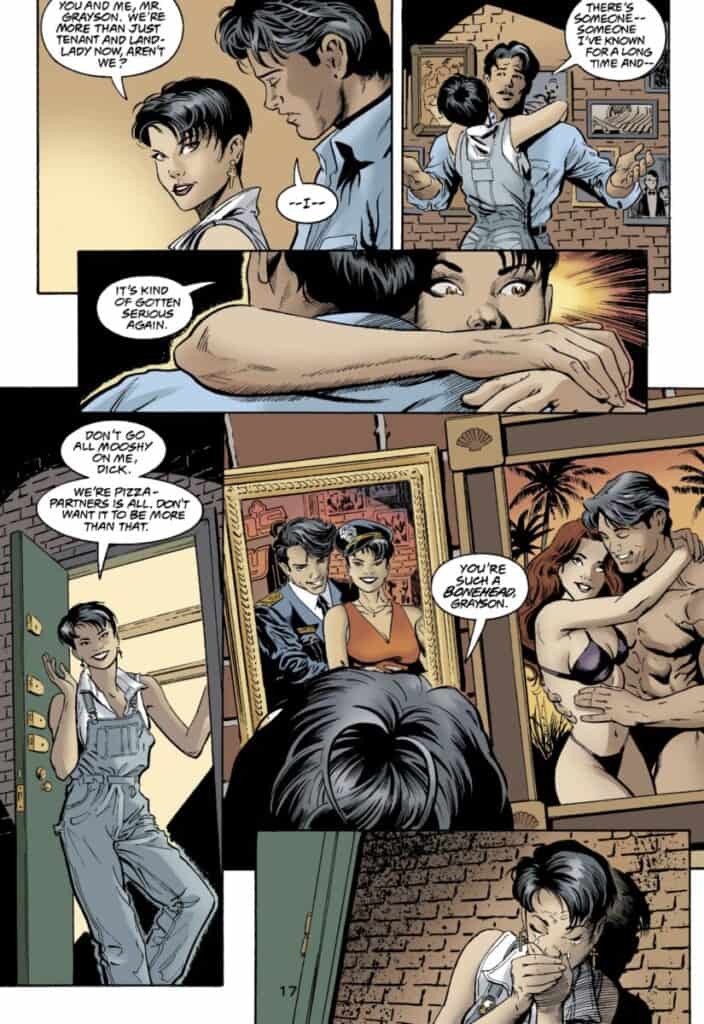***Contains Spoilers***
The Chuck Dixon run on the 1996 Nightwing series spans the first 70 issues. It is Dick Grayson’s first ongoing solo title, and it’s an intriguing deep dive into his life post-Robin. The series starts with Dick establishing himself in Blüdhaven, a grim city plagued by corruption and crime, as he tries to make a name for himself independent of Batman or the Titans. Over time, it intertwines with major DC crossovers and explores themes of identity, trust, and redemption, all while navigating Dick’s relationships and his desire to move out of Batman’s shadow. It’s a slow burn, but the journey is worth it.
What I loved most about this run was its underlying sense of mystery. The first eight or so issues tease out the criminal underworld of Blüdhaven before revealing Blockbuster as the mastermind pulling the strings. The crime noir tone was an excellent fit for Dick, and I appreciated how the story gradually expanded Blüdhaven as a setting—it’s messy and dark, but by the end of the run, it feels like Dick’s own. Another highlight for me was seeing Dick resolve lingering issues with Bruce post-Knightfall and Prodigal. It felt like real growth as Dick came to terms with his complicated relationship with Batman while proving he could thrive on his own.
The series also has some standout moments that stick with you. Dick’s decision to cut off his ponytail in the first issue symbolized the start of something new for the character, and I loved how it was played out. His version of the “Batmobile,” complete with a removable top for blending in, was another touch that reinforced his independence and resourcefulness. Watching him join the police force later in the series added depth to his character, grounding him further in Blüdhaven and showing his commitment to fighting crime in all forms. And of course, seeing him and Barbara Gordon finally come together was a satisfying payoff for fans of their relationship.
However, the series isn’t without its flaws. The early issues’ art style, while clearly trying for something bold and unique, didn’t work for me. It felt chaotic at times, with action sequences that were difficult to follow. Fortunately, the art shifts to a more grounded and realistic tone after the No Man’s Land crossover, which was a welcome change. Another issue was the constant jumping between Gotham and Blüdhaven early on. At first, it felt distracting, as though the series didn’t know where it wanted to focus. That said, once Blüdhaven was fully established, it became a strong and distinct setting.

Lastly, while I enjoyed how the series ties into DC’s major events—like Cataclysm and Bruce Wayne: Murderer/Fugitive—it does make the reading experience a bit choppy at times. The integration with Robin and Birds of Prey was nice, but it sometimes left me wishing the main story could stand more on its own.
Overall, the Nightwing series starts a bit uneven but finds its footing as it progresses. Dixon crafts a compelling crime-driven story, and while the early art style and pacing weren’t for me, the series’ character development and strong finish make it a worthwhile read. I give it 3 stars—something I enjoyed enough to reread down the road but not without its shortcomings.
Feature Image Nightwing #3 cover art by Ray McCarthy and Scott McDaniel
Keep NewToComics.com running with a donation or shopping with through our affiliates—your support helps maintain the site and continue guiding new readers into the world of comics!


